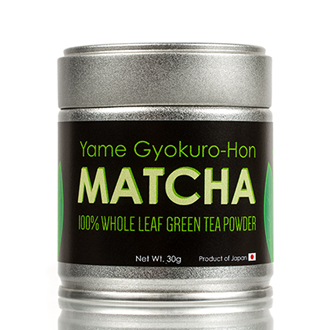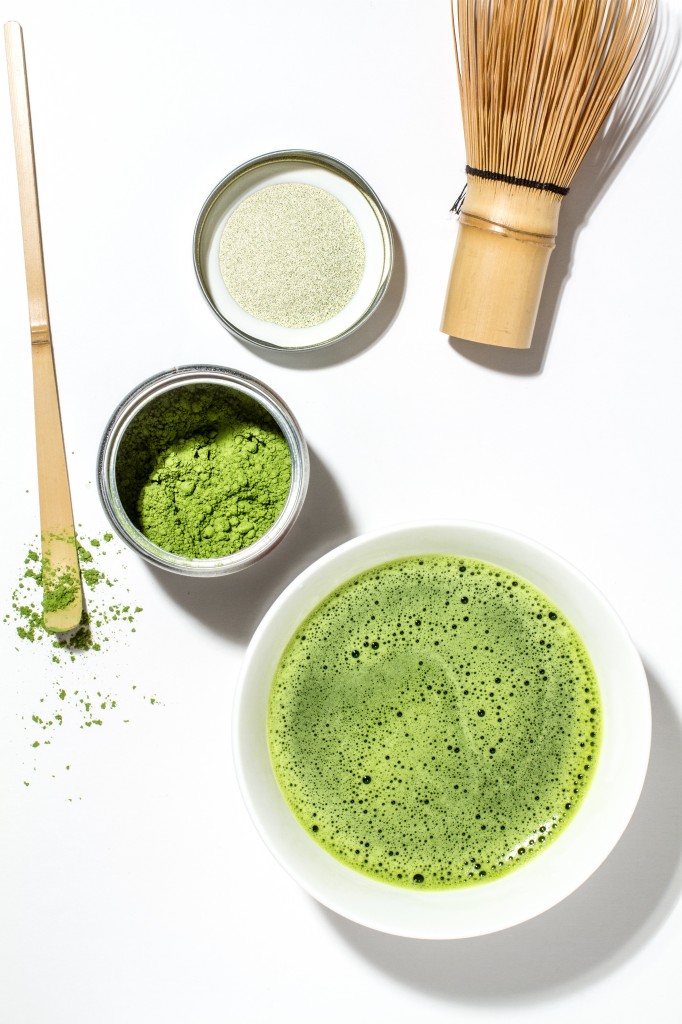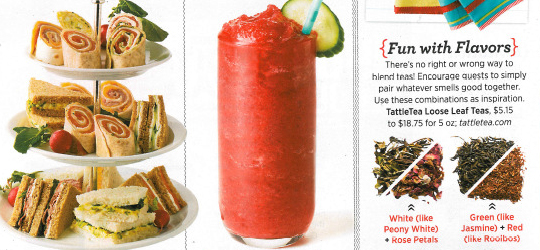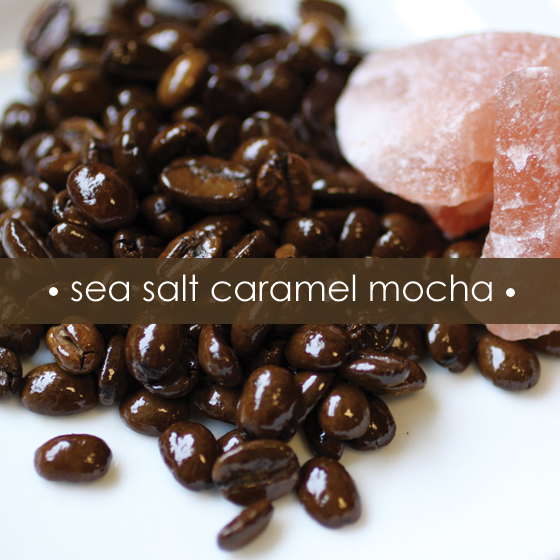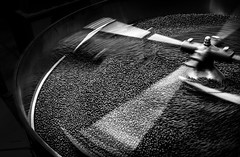Matcha: 800 years of history, culture, and wisdom in a neat little can
Friday, November 14th, 2014 by CBD
It only took us 8 centuries, but Coffee Bean Direct is proud to say, “we finally carry matcha!”
Famous for being the only tea used in the formal Japanese Tea Ceremony known as chado or “the way of tea,” matcha is stone ground green tea powder. Only the highest quality shade grown green tea is used. The soft and supple leaves at the top of the tea plant are picked by hand then processed to remove the veins, stems, and impurities. The result, known as tencha, is stone ground into a fine powder. Over-grinding can give matcha a burnt taste, so the process must be done very slowly and with great care. It takes about 1 hour to produce 1 ounce.
Matcha’s origins began in China, but the tea took on a whole new life in Japan where it was forever tied to Zen spirituality. A Japanese monk named Eisai brought the tea to Japan in 1191 AD after studying Buddhism in China. Eisai is credited with spreading both green tea and Zen teachings throughout Japan. In the 1500s Zen monks in Japan turned making matcha tea into the ritual of chado. Today, matcha is such a large part of Japanese culture that only about 4% is exported out of the country.
But what does it taste like!?
Matcha has a flavor that is uniquely distinct from all other green teas. While many green teas are vegetal or grassy, matcha is savory. The frothy green tea is smooth, creamy, and delicious. In general, matcha is historically famous for its bitter flavor and is often served with a small piece of candy to counteract the taste. However Yame Matcha, a high grade of premium matcha, has absolutely no bitterness or astringency at all, instead it is subtly sweet, with a soft creamy mouth feel.
Yame Matcha earns its amazing flavor and qualities from the garden in which it is grown. Yame is located in the southern part of the Fukuoka prefecture on Kyushu Island in Japan. Japanese lovers of green tea know of Yame’s long tea history; warm in the day, cold at night, with just the right amount of rainfall to make ideal growing conditions for cultivating the highest quality of green tea. The area is famous for growing teas that are both sweet and rich. Yame is famous for producing award winning teas time and time again. Each year the highest quality matcha and Gyokuro teas come from Yame. This very matcha was first runner up at the 2010 World Tea Expo.
This sweeter tasting matcha has become very popular in both Japan and America. Matcha is used to make green tea ice cream and in Japan many sweets are flavored with matcha, including famous brands like Pocky and Nestle Kit Kat bars. In America, matcha is very often used in baked goods, green tea lattes, and frozen drinks (check out our recipe for matcha sugar cookies).
How do you prepare Matcha?
Matcha is meant to be served frothy, with a nice foamy head. The beauty of matcha is that you can make it instantly—no tea bags or steep times. Simply add a small amount of the powder to hot or cold water. The only “rule” is to not use boiling water (about 175° Fahrenheit will suffice). Matcha can be enjoyed thin or thick, ranging from 1/3 of a teaspoon to 2 heaping teaspoons for 3 ounces of hot water. 1 gram of tea in a 16-oz bottle of water will make a perfect light, creamy tea.
Traditionally matcha is whisked to perfection during the tea ceremony. Many people will use a small, battery powered milk frother. Around the office at Tattle Tea, you will frequently see people dropping a small amount of matcha into a bottle or air-tight thermos and then shaking vigorously (PLEASE make sure your lid is screwed on nice and tight and your thermos will not leak before you begin shaking scalding hot liquid!)
The Japanese Tea Ceremony is deliberately slow and drawn out. The purpose is to force you to stop and appreciate the beauty in simple things, like a perfect cup of hot tea. Truly, there is something special about creating the perfect cup of matcha—you experience something subtle yet sublime.
Unfortunately most Americans do not have time to “stop and smell the roses.” This is sad, because with our hectic schedules, we could really benefit from a slow-down every now and again. Luckily, every tiny grain of matcha powder is infused with 800 years of wisdom and enlightenment. Whether you make your matcha on-the-go, or have time to sit, relax, and see the beauty in the mundane, it can still be a Zen experience. Whisked, stirred or shaken, each sip will bring you bliss.
It only took us 8 centuries, but Coffee Bean Direct is proud to say, “we finally carry matcha!”
Famous for being the only tea used in the formal Japanese Tea Ceremony known as chado or “the way of tea,” matcha is stone ground green tea powder. Only the highest quality shade grown green tea is used. The soft and supple leaves at the top of the tea plant are picked by hand then processed to remove the veins, stems, and impurities. The result, known as tencha, is stone ground into a fine powder. Over-grinding can give matcha a burnt taste, so the process must be done very slowly and with great care. It takes about 1 hour to produce 1 ounce.
Matcha’s origins began in China, but the tea took on a whole new life in Japan where it was forever tied to Zen spirituality. A Japanese monk named Eisai brought the tea to Japan in 1191 AD after studying Buddhism in China. Eisai is credited with spreading both green tea and Zen teachings throughout Japan. In the 1500s Zen monks in Japan turned making matcha tea into the ritual of chado. Today, matcha is such a large part of Japanese culture that only about 4% is exported out of the country.
But what does it taste like!?
Matcha has a flavor that is uniquely distinct from all other green teas. While many green teas are vegetal or grassy, matcha is savory. The frothy green tea is smooth, creamy, and delicious. In general, matcha is historically famous for its bitter flavor and is often served with a small piece of candy to counteract the taste. However Yame Matcha, a high grade of premium matcha, has absolutely no bitterness or astringency at all, instead it is subtly sweet, with a soft creamy mouth feel.
Yame Matcha earns its amazing flavor and qualities from the garden in which it is grown. Yame is located in the southern part of the Fukuoka prefecture on Kyushu Island in Japan. Japanese lovers of green tea know of Yame’s long tea history; warm in the day, cold at night, with just the right amount of rainfall to make ideal growing conditions for cultivating the highest quality of green tea. The area is famous for growing teas that are both sweet and rich. Yame is famous for producing award winning teas time and time again. Each year the highest quality matcha and Gyokuro teas come from Yame. This very matcha was first runner up at the 2010 World Tea Expo.
This sweeter tasting matcha has become very popular in both Japan and America. Matcha is used to make green tea ice cream and in Japan many sweets are flavored with matcha, including famous brands like Pocky and Nestle Kit Kat bars. In America, matcha is very often used in baked goods, green tea lattes, and frozen drinks (check out our recipe for matcha sugar cookies).
How do you prepare Matcha?
Matcha is meant to be served frothy, with a nice foamy head. The beauty of matcha is that you can make it instantly—no tea bags or steep times. Simply add a small amount of the powder to hot or cold water. The only “rule” is to not use boiling water (about 175° Fahrenheit will suffice). Matcha can be enjoyed thin or thick, ranging from 1/3 of a teaspoon to 2 heaping teaspoons for 3 ounces of hot water. 1 gram of tea in a 16-oz bottle of water will make a perfect light, creamy tea.
Traditionally matcha is whisked to perfection during the tea ceremony. Many people will use a small, battery powered milk frother. Around the office at Tattle Tea, you will frequently see people dropping a small amount of matcha into a bottle or air-tight thermos and then shaking vigorously (PLEASE make sure your lid is screwed on nice and tight and your thermos will not leak before you begin shaking scalding hot liquid!)
The Japanese Tea Ceremony is deliberately slow and drawn out. The purpose is to force you to stop and appreciate the beauty in simple things, like a perfect cup of hot tea. Truly, there is something special about creating the perfect cup of matcha—you experience something subtle yet sublime.
Unfortunately most Americans do not have time to “stop and smell the roses.” This is sad, because with our hectic schedules, we could really benefit from a slow-down every now and again. Luckily, every tiny grain of matcha powder is infused with 800 years of wisdom and enlightenment. Whether you make your matcha on-the-go, or have time to sit, relax, and see the beauty in the mundane, it can still be a Zen experience. Whisked, stirred or shaken, each sip will bring you bliss.

